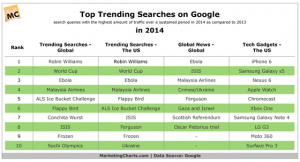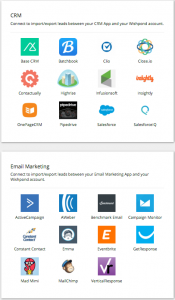When you consider your business’ diversity and inclusion programs, what comes to mind? Acceptance and respect for all races, genders, nationalities, generations, religious affiliations, and sexual orientations? Empowerment of women in leadership roles? Opportunities for people of all physical and intellectual capabilities?
inclusion programs, what comes to mind? Acceptance and respect for all races, genders, nationalities, generations, religious affiliations, and sexual orientations? Empowerment of women in leadership roles? Opportunities for people of all physical and intellectual capabilities?
How about special efforts in recruiting and hiring veterans?
If employing veterans has yet to gain traction in your business, you’re not alone. According to the recent study “From the Armed Forces to the Workforce: Why Veteran Hiring Is Both the Right Thing to Do and a Smart Move to Make” by Bersin by Deloitte, more than half of all businesses in the United States (55%) do not actively and specifically recruit veterans.
Why are industry leaders such as Walmart, CSX, and SAP taking notice of the 240,000-360,000 veterans returning to civilian life each year? The answer is quite simple: This talent pool has the skills and temperament businesses need to succeed – today and tomorrow. In fact, the Bersin by Deloitte study cites that this highly skilled workforce is 4% more productive and 3% less likely to leave than the overall civilian workforce.
Hiring veterans: It’s not just patriotic – it adds value to your workforce
It’s a safe bet that hiring managers everywhere maintain a list of people they would want to recruit. Take a hard look at your own list. Are any veterans included?
The Bersin by Deloitte study cites three reasons why veterans can prove to be a valuable asset for businesses of all sizes and industries:
1. Technical expertise your business needs
Military personnel – no matter their duty and rank – receive technical training specific to their role. But don’t be fooled. Their skills are not just suitable for combat, they also translate well in the business world.
Approximately 80% of military jobs are exact or similar equivalents to civilian jobs. And sometimes their skills surpass those of civilians with a certificate or degree. In the Bersin by Deloitte study, the vice president of sales for Orion International, a job recruitment firm for officers and enlisted technicians, is quoted: “Military technicians’ level of expertise sometimes surprises people that we talk to once we explain the schooling they’ve had, the real-world experience, and the systems that they work on today.”
2. Leadership skills to drive the business forward
The state of leadership in most companies is reaching a crossroads. As the workforce becomes increasingly diverse and responsible for global business growth, the ability to lead such a team and make sound decisions on the fly becomes the imperative – not just a highly valued skill. Unfortunately, less than half of executives believe their companies possess the skills required to effectively manage talent and drive change, as reported by the “Workforce 2020” study conducted by Oxford Economics. When it comes to today’s marketplace, there is no room for indecision and mistakes – every moment counts in the battle for wallet share.
Especially during wartime, military life brings a level of leadership experience that exceeds that of the average 22-year-old college graduate. Along with strong leadership skills, veterans understand how to collaborate and succeed through cultural inclusion, teamwork, and motivation of an internationally diverse workforce – all with an eye on achieving the ultimate goal.
No matter how stressful the work situation, it cannot possibly be more intense than the battlefield. As a result, veterans are more likely to stay composed when making critical decisions on the fly. For example, whenever a failure occurs, veterans tend to bounce back from the experience more quickly and completely, according to the Syracuse University Institute for Veterans and Military Families.
3. The ability to learn on the job quickly
A common concern among recruiters is access to employees with base-level skills, including the use of technology. The “Workforce 2020” study found that employee proficiency with technology such as cloud and analytics is expected to become a critical asset in the Future of Work in the next three years. To procure these skills on the scale they need, businesses must focus on training their employees.
However, the outlook is bleak – only 48% of employees indicate that their company provides ample training on technology. Why? It’s the culture. Less than half (42%) of organizations have allocated the budget and resources necessary to support well-defined processes and tools for developing their talent. What’s needed is a workforce that is capable of at-the-moment learning, no matter how intense the work environment.
No 18-year-old enlists already knowing how to detonate an improvised explosive device (IED), operate tanks, and apply guerilla war tactics. Service members are trained for the job they are assigned. However, this learning experience is like none experienced in civilian life. Training is normally fast-paced, around the clock, and under conditions that are already highly stressful. Nevertheless, the expectation is that the all personnel will succeed because their survival – aa well as that of their entire team – depends on their ability to properly apply that new knowledge.
This ingrained capability for learning any subject matter fully and on the job is an incredible asset for today’s fast-paced and constantly changing work environments. What drives them to learn? It’s their high desire for achievement and self-efficacy as well as a comfort level with autonomy and ambiguous circumstances. And your employees can learn from a veteran’s example.
Explore how you can can create a workforce ecosystem that can help your business succeed. Download the Center for Business Insight inquiry, “A New Vision for HR Management: The Workforce Ecosystem.”
(208)








